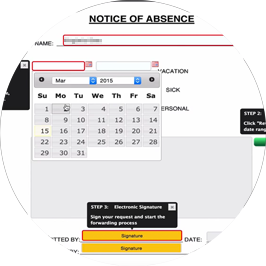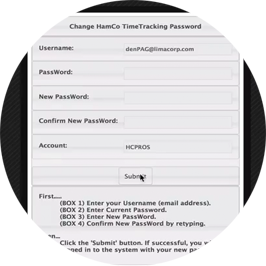EFormConnect™ is an application that provides a way to seamlessly fill out forms, capture form data, and electronically sign forms. Both forms and data can be distributed electronically throughout the entire enterprise via secured network connections.
Learn MoreWe have have prepared 3 screen casts from an EFormConnect implementation that demonstrate some basic functions as well as some highly customized features illustrating the product’s interfacing capabilities. It is the customized interfacing (with other external and internal systems) that differentiate EFormConnect as a paperless form processing solution.
Learn MoreOur process for digitizing your paper forms is as simple as 1-2-3. We digitize, optimize, and test your new forms before delivering them to you. Take a look at how this process will benefit your business…
Learn MoreHave you signed up for our newsletter?
Acceptable use of social media and adherence to workplace physical security drops, new survey shows. The majority of US workers fall short when it comes to strong knowledge of security and privacy best practices, potentially putting their companies at risk of a breach, according to a new report. The 2017 State of Privacy and Security Awareness Report, which surveyed 1,012 US workers, found that 70% of employees lack a firm grasp of security and privacy. Overall, that’s an improvement from last year, when the number was at 88%. “I think things, in general, are getting better,” says Tom Pendergast, chief strategist for security, privacy, and compliance for MediaPro, which conducted the study. The survey results were drawn from 31 questions asked across eight categories of threat vectors. Survey participants were ranked as “risk,” “novice,” or “hero,” depending on the number of incorrect answers they provided. According to the survey, the percentage of “risk” employees grew to 19% this year from 16% last year, while the ranks of “novice” workers shrank to 51% this year from 72% last year. Employees in the “hero” category reaching 30% this year, up from 12% last year. Threat Vectors Source: MediaPro “Both years, ‘risky’ individuals got caught up in two key areas: physical security, and safe remote and mobile computing,” Pendergast says. In physical security, over half of the “risky” respondents chose to hold the door open for a stranger, without first checking to see if the individual had the proper identification or access to a secured area, he explained. Additionally, 62.3% of “risky” respondents this year thought...
Learn MoreTrue digital transformation goes all the way through to the core. And that includes an often overlooked aspect: the workplace itself. Yes, modernizing IT systems, overhauling business processes and stacking talent benches are crucial undertakings. But such initiatives lay bare a chicken-and-egg problem that many CIOs must scramble to address: that a good customer experience first requires a good employee experience in the form of a digital workplace, says Gartner analyst Carol Rozwell. What is the digital workplace? It is a business strategy aimed at boosting employee engagement and agility through consumerization of the work environment, Rozwell says. Think of your one-size-fits-all-users ERP or expense management applications and imagine the opposite user experience. Your digital workplace should help individuals and teams work more productively without compromising operations. It should include computers, mobile devices and productivity and collaboration applications that are web-based and synch in real time. Such tools should, for example, mimic the ease of use of Uber and Airbnb and the social aspects of Facebook and Instagram. IBM, for one, has undertaken a massive transformation of its workplace to lure new tech talent. “The idea of the digital workplace is to bring that same simplicity and intuitiveness to employees when they’re doing their mission-critical work,” Rozwell says. Maybe you’ve heard your CIO peers talk about “getting ahead of shadow IT”? They mean facilitating, rather than prohibiting, consumerization. Following is an eight-point plan for transformation your work environment into a digital workplace, which Rozwell recently shared with CIO.com. 1. Vision Your digital workplace plan should align with business and digital transformation goals — and clearly answer why you want...
Learn MoreData-centricity Organisations are tripping over themselves to become data-centric. They are busy investing in business intelligence and analytical infrastructures. There is a thriving market for analysts and data scientists, accountants and actuaries, people who can pore over the numbers and provide insight. Data is the new gold, businesses are spending money like drunk sailors. Data is a force for good. Isn’t it? Well, sort of… At the risk of sounding like a prize nerd I’m going to use an analogy. The analogy is “the force” in the Star Wars movies. Data, like the force, is a powerful thing, but it has a dark side. It can destroy an organisation just as quickly as it can help one. The light side Your business cannot hope to be successful if you don’t use data: In God we trust, all others bring data ~ W. Edwards Deming The dark side But in the hands of some, data is a very dangerous thing: Should you use data? Of course you should. But are you planning to use it as a stick to hit people with or a torch to illuminate the way? Are you strong enough to use data wisely? The force can have a strong influence on the weak-minded ~ Ben Kenobi If you enjoyed this post click here to receive the next [embedded content] Read another opinion Image by jmm Related Articles Share this: Source: Squawk...
Learn MoreTake a look at EFC in action.

Jun 3, 2015

Jun 3, 2015

Jun 3, 2015